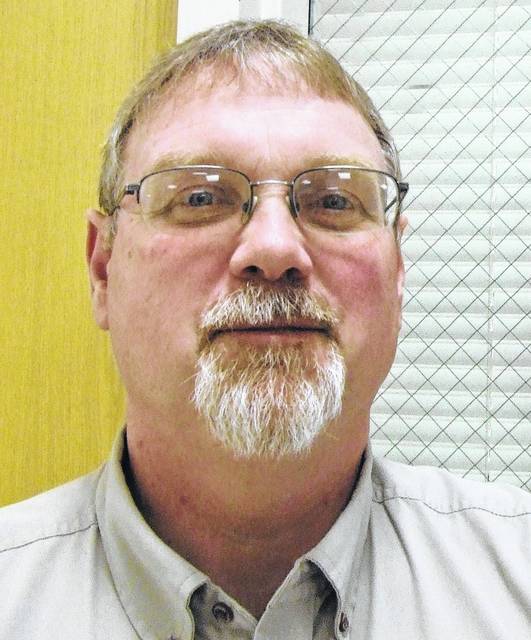
We got a couple of breaks in the weather recently for some farmers to get into the fields and actually plant some crops. Any rain now will continue to push planting season even farther into the calendar.
Since it appears we may (hopefully) start to see more opportunity to get field work completed and crops planted we will also start to see more farm equipment on the roadways. This means we should all get geared up for safer road travels and be more attentive when driving.
Just the other day, I followed a very large tractor and field implement attached traveling out of Wilmington.
There were several cars following behind and I could tell some drivers were getting impatient. The weaving in and out of traffic to find opportunity to pass this farm equipment was “nerve wracking” enough to watch let alone to be in the same line of traffic with them.
When it was all said and done, it took me a whole 5 minutes longer to get where I wanted to go. Not a big deal.
My words of wisdom to the average roadway user is this: It is farm country and there will be more and more farm traffic on the roadways in the next few weeks. Plan accordingly, get your act together and give yourself some extra time to get where you want to be.
I saw a great comment on social media the other day that put things in perspective, and I quote the unknown source, “Getting caught behind slow-moving farm equipment for two miles is equivalent to waiting for two traffic lights in the city. YOU’LL SURVIVE!”
So stay back, enjoy the scenery and share the road responsibly this planting season.
Don’t worry, I have not left out the farmer. They too need to remember rural roads pose special dangers with curves, two-way traffic, slow-moving farm vehicles, wildlife, narrow lanes, and more. Whenever you hit the road with your machinery for field-work, check on your equipment and roadway habits to reduce the risk of a roadway incident.
Pay attention to the following details:
• Is your equipment labeled with slow moving vehicle (SMV) emblems that are in good condition?
• Are all of your lights fully functioning and visible? Do you perform pre-travel checks?
• Is your equipment outlined with reflective equipment to mark the wide points?
• Are you keeping lights on whenever you’re on the road, including during the day?
• Are you trying to travel during daylight, or using only lit equipment at night?
• Are you always using turn signals?
• Are your employees trained for farm equipment safety on public roads?
• Are you keeping an eye on cars behind you? It may be helpful to pull over for cars to pass when it’s safe.
We all need to practice roadway safety and remember ‘patience is a virtue’. A little bit of patience may save your life or someone else’s life.
Prevented planting decisions
One topic I have seen and heard more information discussed has to do with prevented planting situations. With the continued wet weather and saturated soils over much of the Midwest, this situation suggests that many farmers will be facing decisions on whether to take prevented planting.
According to a recent article at the University of Illinois, farmdoc daily web page, prevented planting is available for those individuals purchasing the Common Crop Insurance (COMBO) product.
Keep in mind, once the final planting date has arrived, the farmer can choose to take a prevented planting payment, plant corn, or plant soybeans or another crop.
A cover crop can be planted on prevented planting farmland, but there are restrictions on haying and grazing the cover crop. In many cases, taking the prevented planting payments will have higher expected returns than planting.
However, market and policy dynamics this year make forming expectation on alternatives very difficult. This article discusses considerations in making these decisions.
The authors of this article, Gary Schnitkey, Krista Swanson, and Ryan Batts from the Department of Agricultural and Consumer Economics, University of Illinois and Carl Zulauf from the Department of Agricultural, Environmental and Development Economics, Ohio State University go into great detail in this article.
Due to the length of this article, I have chosen to just highlight the topics discussed in the article and would encourage you to read the entire article by going to https://farmdocdaily.illinois.edu and look for the article that addresses prevented planting decisions.
The following are some of the topics discussed in this article:
• Need to Contact Crop Insurance Agents
• Eligibility for Prevented Planting Payments.
• Linkages between Commodity Title Programs and Market Facilitation Program Payments
• Acres Eligible for Prevented Planting
• Farmer-paid Premium and Enterprise Units
• APH Yields
• Decisions Following the Final Planting Date for Crop Insurance Purposes
• Planting Corn versus Taking a Prevented Planting Payment
• Switching to Soybeans versus Taking a Prevented Planting Payment
• Market and Policy Dynamics
• Summary and Other References
Tony Nye is the state coordinator for the Ohio State University Extension Small Farm Program and has been an OSU Extension Educator for agriculture and natural resources for over 30 years, currently serving Clinton County and the Miami Valley EERA.


